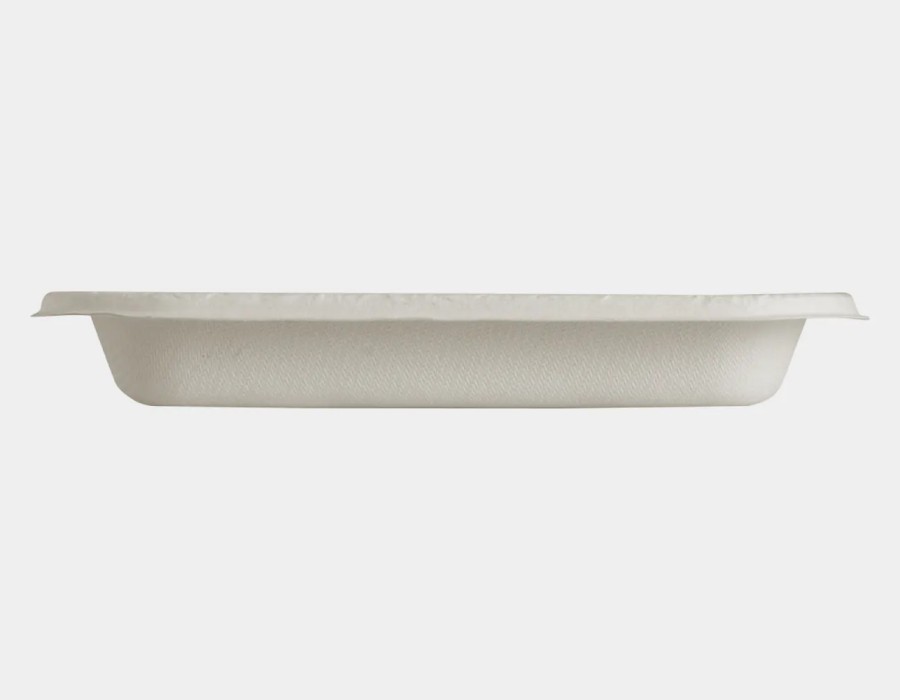As consumers and businesses alike shift toward sustainable options, the demand for eco-friendly food packaging is higher than ever. One innovative solution leading the charge is bagasse food packaging—a sustainable, compostable alternative to traditional plastic and Styrofoam containers. Derived from sugarcane waste, bagasse packaging offers a unique combination of environmental benefits and functionality, making it a popular choice in the green dining movement. Here, we’ll explore why bagasse food packaging is not only a trend but a transformative solution that’s shaping the future of eco-friendly dining.
What is Bagasse and How is it Made?
Bagasse is a fibrous byproduct left after sugarcane is crushed to extract juice. Traditionally, this material was either burned or discarded, adding to waste and environmental impact. However, technological advancements have allowed bagasse to be repurposed into durable, biodegradable packaging. Bagasse is processed, cleaned, and molded into various shapes, creating plates, bowls, cups, and containers that are both sturdy and eco-conscious.
The Environmental Impact of Bagasse Food Packaging
Bagasse packaging stands out in the world of sustainable options because it addresses multiple environmental challenges:
Biodegradable and Compostable Nature
Unlike plastic, which takes hundreds of years to decompose, bagasse food containers break down within a few months in composting facilities. This compostability means that bagasse packaging returns to the earth as organic matter rather than contributing to landfill waste.
Reduction of Carbon Emissions
Creating bagasse packaging produces fewer carbon emissions than manufacturing plastic or Styrofoam. Moreover, by using an agricultural byproduct, bagasse production minimizes the demand for raw materials, leading to a smaller environmental footprint.
Alternative to Deforestation-Based Products
Since bagasse is derived from sugarcane waste, it doesn't contribute to deforestation, unlike paper products sourced from virgin wood pulp. By choosing bagasse, businesses can support conservation efforts and reduce the strain on natural forests.
The Functional Benefits of Bagasse Food Packaging
While environmental benefits are essential, bagasse packaging also offers practical advantages that make it ideal for both businesses and consumers:
Heat and Water Resistance
Bagasse food containers are naturally heat-resistant, making them suitable for both hot and cold foods. They can safely withstand microwave heating, and they don’t warp or leak with hot liquids—qualities that make them highly functional for various food service applications.
Sturdy and Durable
Though biodegradable, bagasse packaging is remarkably sturdy. It holds its shape and strength even with heavy or saucy foods, which gives it an edge over many other eco-friendly options. This durability makes it an attractive choice for restaurants, food trucks, and catering services looking for reliable green alternatives.
Safe for Food and Non-Toxic
Bagasse is non-toxic and chemical-free, unlike some types of plastic and foam packaging that contain harmful chemicals. It provides a safe food storage option for consumers, and its natural composition ensures that no toxins are released into food, even when heated.
How Businesses Can Transition to Bagasse Food Packaging
Switching to bagasse food packaging is easier than it might seem, as these containers are available in a wide range of shapes, sizes, and designs to suit diverse food service needs. Here are some practical steps for businesses interested in making the transition:
Evaluate Your Packaging Needs
Assess the types of containers your business requires, whether they are for hot foods, cold items, or liquid-based dishes. Bagasse packaging offers diverse options to fit most food service requirements.
Partner with Reliable Suppliers
Look for reputable suppliers specializing in eco-friendly packaging. This ensures that your bagasse products are high-quality, certified compostable, and ethically sourced.
The Future of Bagasse and Beyond
The future of dining is undeniably leaning toward sustainability, and bagasse food packaging represents one of the most promising advancements in eco-friendly materials. As innovations in green technology continue, we can expect to see even more sophisticated and versatile options for bagasse packaging, making it a powerful tool in the global shift toward sustainable practices.
Conclusion
Bagasse food packaging is more than just a trend—it’s a forward-thinking solution that addresses both environmental and practical needs in the food service industry. By choosing bagasse, businesses contribute to a cleaner planet, support a circular economy, and provide customers with a greener alternative to conventional packaging. As the world moves towards more sustainable choices, bagasse packaging is setting the standard for a future where eco-friendly dining becomes the norm.





Comments